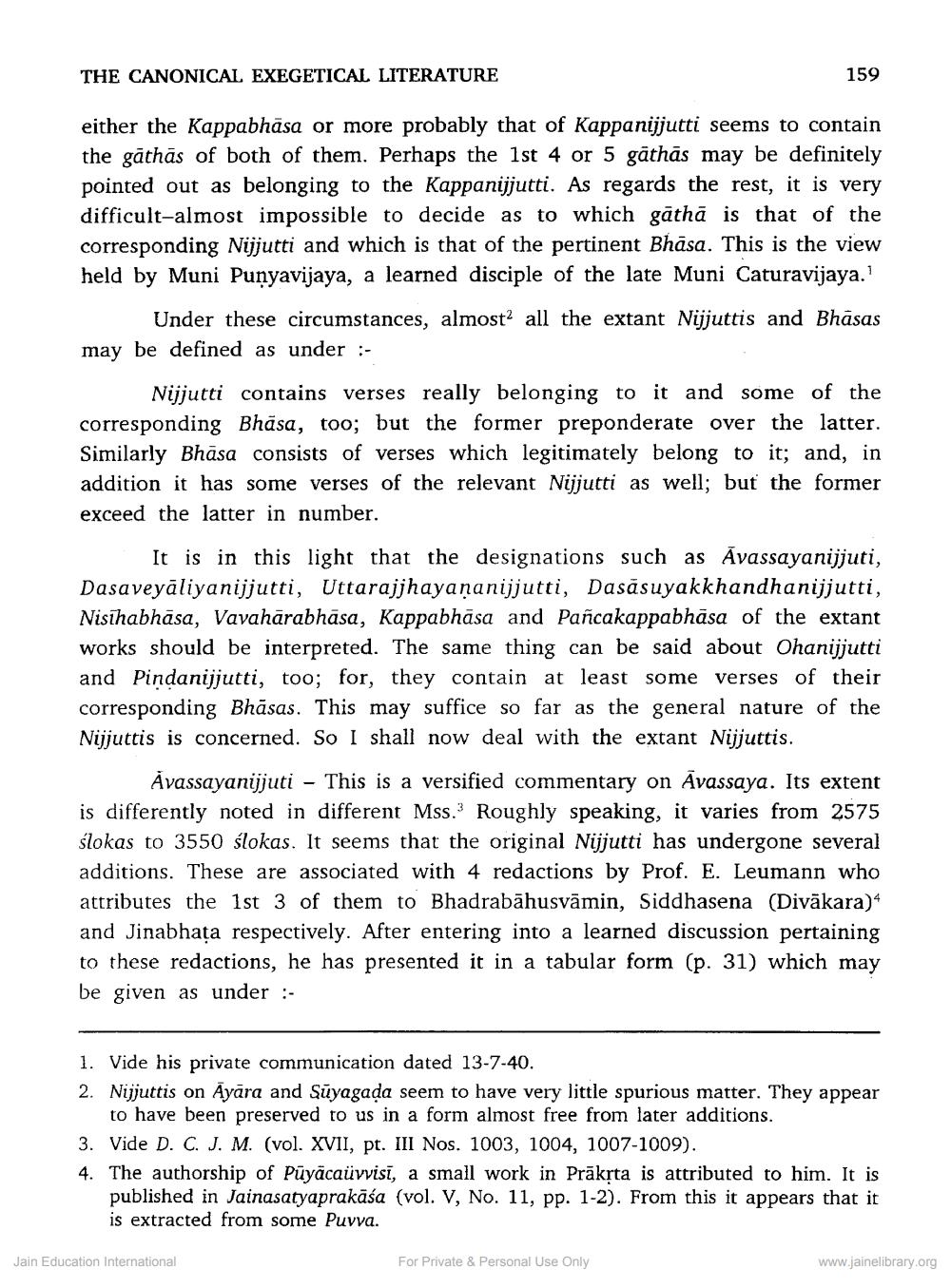________________
THE CANONICAL EXEGETICAL LITERATURE
159
either the Kappabhāsa or more probably that of Kappanijjutti seems to contain the gāthās of both of them. Perhaps the 1st 4 or 5 gāthās may be definitely pointed out as belonging to the Kappanijjutti. As regards the rest, it is very difficult-almost impossible to decide as to which gāthā is that of the corresponding Nijjutti and which is that of the pertinent Bhāsa. This is the view held by Muni Punyavijaya, a learned disciple of the late Muni Caturavijaya.
Under these circumstances, almost all the extant Nijjuttis and Bhāsas may be defined as under :
Nijjutti contains verses really belonging to it and some of the corresponding Bhāsa, too; but the former preponderate over the latter. Similarly Bhāsa consists of verses which legitimately belong to it; and, in addition it has some verses of the relevant Nijjutti as well; but the former exceed the latter in number.
It is in this light that the designations such as Āvassayanijjuti, Dasaveyāliyanijjutti, Uttarajjhayananijjutti, Dasāsuyakkhandhanijjutti, Nisthabhāsa, Vavahārabhāsa, Kappabhāsa and Pañcakappabhāsa of the extant works should be interpreted. The same thing can be said about Ohanijjutti and Pindanijjutti, too; for, they contain at least some verses of their corresponding Bhāsas. This may suffice so far as the general nature of the Nijjuttis is concerned. So I shall now deal with the extant Nijjuttis.
..
Avassayanijjuti - This is a versified commentary on Avassaya. Its extent is differently noted in different Mss. Roughly speaking, it varies from 2575 ślokas to 3550 ślokas. It seems that the original Nijjutti has undergone several additions. These are associated with 4 redactions by Prof. E. Leumann who attributes the 1st 3 of them to Bhadrabāhusvāmin, Siddhasena (Divākara) and Jinabhata respectively. After entering into a learned discussion pertaining to these redactions, he has presented it in a tabular form (p. 31) which may be given as under :
1. Vide his private communication dated 13-7-40. 2. Nijjuttis on Ayāra and Sūyagada seem to have very little spurious matter. They appear
to have been preserved to us in a form almost free from later additions. 3. Vide D. C. J. M. (vol. XVII, Pt. III Nos. 1003, 1004, 1007-1009). 4. The authorship of Püyäcaüvvisi, a small work in Prākrta is attributed to him. It is
published in Jainasatyaprakāśa (vol. V, No. 11, pp. 1-2). From this it appears that it is extracted from some Puvva.
Jain Education International
For Private & Personal Use Only
www.jainelibrary.org




